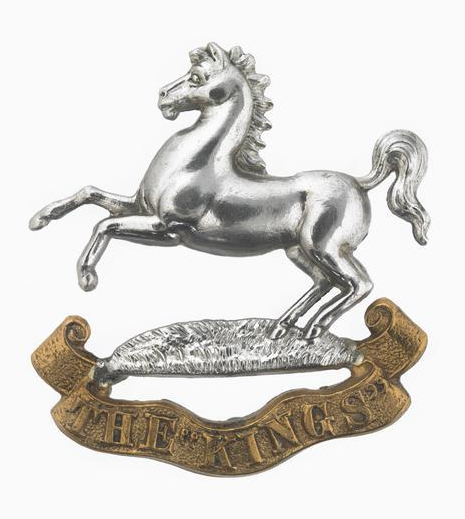Personal Details
Born: In 1873 in Ash, Shropshire.
Family: He was the fifth of eight children born to Samuel and Annie Arrowsmith. Samuel died in 1876 and Annie remarried in 1880 to Abraham Griffiths. Henry also had a step brother. Research suggests that Henry may have married Kate Powell in 1925 in Lancaster, Lancashire.
Residence: In 1881 Henry was living in Foxes lane, Broughall, Whitchurch, Shropshire with his mother, step father and some of his siblings. In 1891 and 1901 he was serving with the King’s Shropshire Light Infantry. In 1905 he was living at 13 Chesterfield Street, Crewe, Cheshire and in 1914 at 25 Cemetery Road, Crewe with his brother Samuel. At the time of his death he lived at 18 Marine Road West, Morecombe, Lancashire.
Employment: He was a labourer before he enlisted in 1889.
Died: October 1934 in Morecambe, Lancashire.
Other information: He lied about his age when enlisting stating that he was born in 1871.
Military Details
Regiment: The King’s (Liverpool Regiment)
Rank: Sergeant
Service Number: 28349
Date of Enlistment: 9 October 1914
Date of Discharge: 16 April 1917
Reason for Discharge: No longer physically fit
Other Information: Prior to WW1 Henry had periods of service in the Shropshire Light Infantry (2261 and 3131 commencing 23 September 1889), Royal Garrison Artillery (5597 commencing 10 September 1902) and the Militia Reserve (5058 commencing 18 August 1905). He served in the Boer War and was awarded the Queen’s South Africa Medal with 4 clasps. He contracted syphilis in Calcutta, India in August 1895 and faced 2 separate Courts of Enquiry being exonerated by both.
Henry is commemorated on the Crewe Boer War memorial.
Henry was awarded the Campaign Medals (1914/15 Star, British War Medal and Victory Medal) and Silver War Badge (number 237125).

The 1914 Star (also known as 'Pip') was authorised under Special Army Order no. 350 in November 1917 and by an Admiralty Fleet Order in 1918, for award to officers and men of the British and Indian Expeditionary Forces who served in France or Belgium between 5 August and midnight of 22–23 November 1914. The former date is the day after Britain's declaration of war against the Central Powers, and the closing date marks the end of the First Battle of Ypres.
The 1914–15 Star (also known as 'Pip') was instituted in December 1918 and was awarded to officers and men of British and Imperial forces who served against the Central European Powers in any theatre of the Great War between 5 August 1914 and 31 December 1915. The period of eligibility was prior to the introduction of the Military Service Act 1916, which instituted conscription in Britain.
The British War Medal (also known as 'Squeak') was a silver or bronze medal awarded to officers and men of the British and Imperial Forces who either entered a theatre of war or entered service overseas between 5th August 1914 and 11th November 1918 inclusive. This was later extended to services in Russia, Siberia and some other areas in 1919 and 1920. Approximately 6.5 million British War Medals were issued. Approximately 6.4 million of these were the silver versions of this medal. Around 110,000 of a bronze version were issued mainly to Chinese, Maltese and Indian Labour Corps. The front (obv or obverse) of the medal depicts the head of George V. The recipient's service number, rank, name and unit was impressed on the rim.
The Allied Victory Medal (also known as 'Wilfred') was issued by each of the allies. It was decided that each of the allies should each issue their own bronze victory medal with a similar design, similar equivalent wording and identical ribbon. The British medal was designed by W. McMillan. The front depicts a winged classical figure representing victory. Approximately 5.7 million victory medals were issued. Interestingly, eligibility for this medal was more restrictive and not everyone who received the British War Medal ('Squeak') also received the Victory Medal ('Wilfred'). However, in general, all recipients of 'Wilfred' also received 'Squeak' and all recipients of The 1914 Star or The 1914/1915 Star (also known as 'Pip') also received both 'Squeak' and 'Wilfred'. The recipient's service number, rank, name and unit was impressed on the rim.

The Silver War Badge was issued in the United Kingdom and the British Empire to service personnel who had been honourably discharged due to wounds or sickness from military service in World War I. The badge, sometimes known as the "Discharge Badge", the "Wound Badge" or "Services Rendered Badge", was first issued in September 1916, along with an official certificate of entitlement.

